Mass Spectrometers in IMSERC
Sciex QTrap 6500+
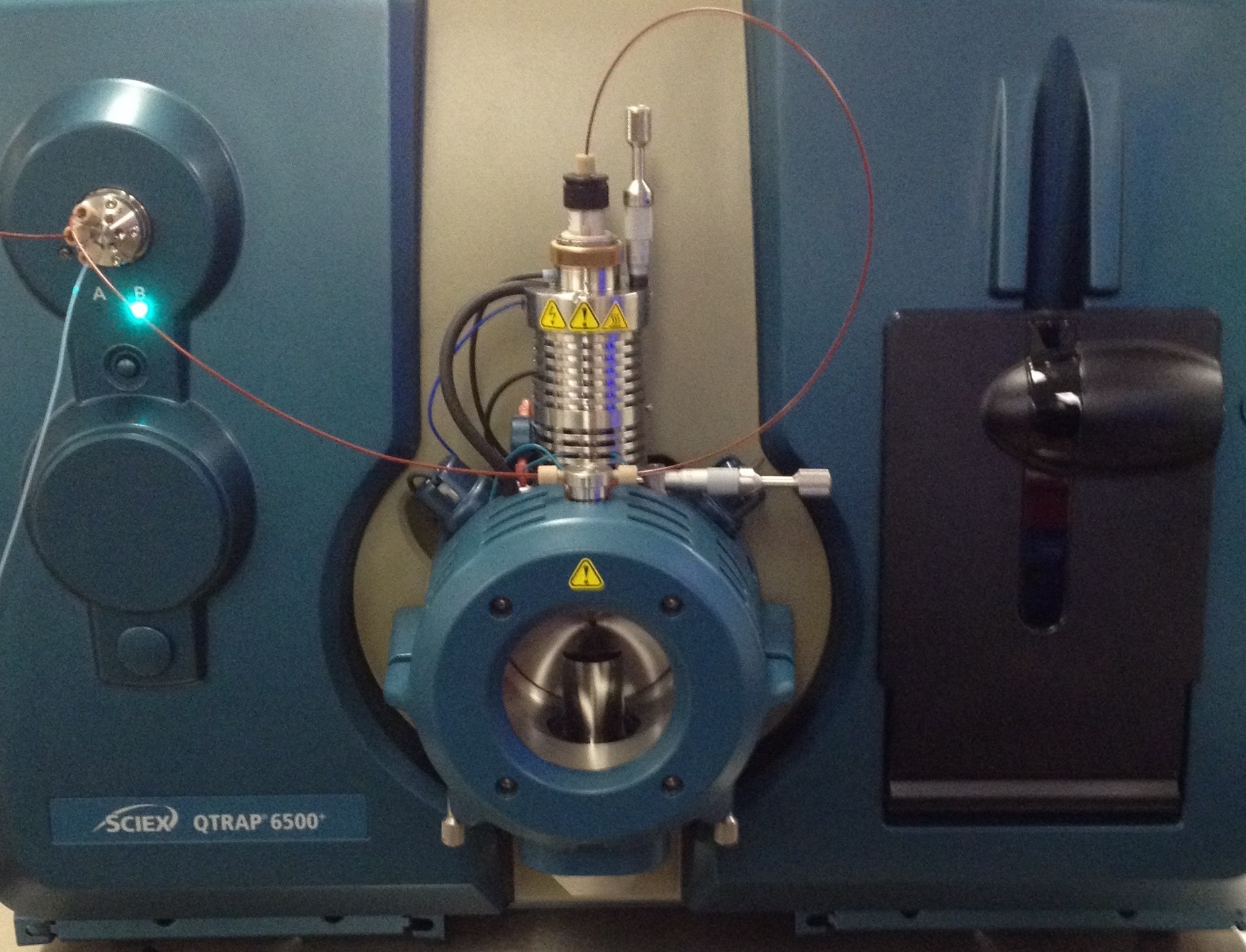
This instrument is configured for UPLC by default. These two modes of operations will share a calendar. The mass spectrometer is capable of performing all standard scans of a triple quadrupole mass spectrometer, in addition to some unique scans by using the linear ion trap scan modes. This system is best suited for trace level quantitation of small to moderate size molecules. Available sources are ESI, APCI, and nanoESI. The UPLC system is capable of operating in both HPLC and UPLC modes. Because of the nature of quantitative analysises, reservation have to be on a per day basis.
Specifications
- Triple Quadrupole and Linear Ion Trap Mass Analyzers in the System
- Examples of available scans are Q1 MS, Product Ion, Precursor Ion, Neutral Loss and Gain, MRM, MRM3, and ER Enhanced Resolution.
- Ionization Sources - ESI, APCI, and nanoESI
- Mass Range up to 2,000 Da
- UPLC and nanoLC Capable
- High-Throughput Capable
Agilent 6545 Q-TOF LC/MS
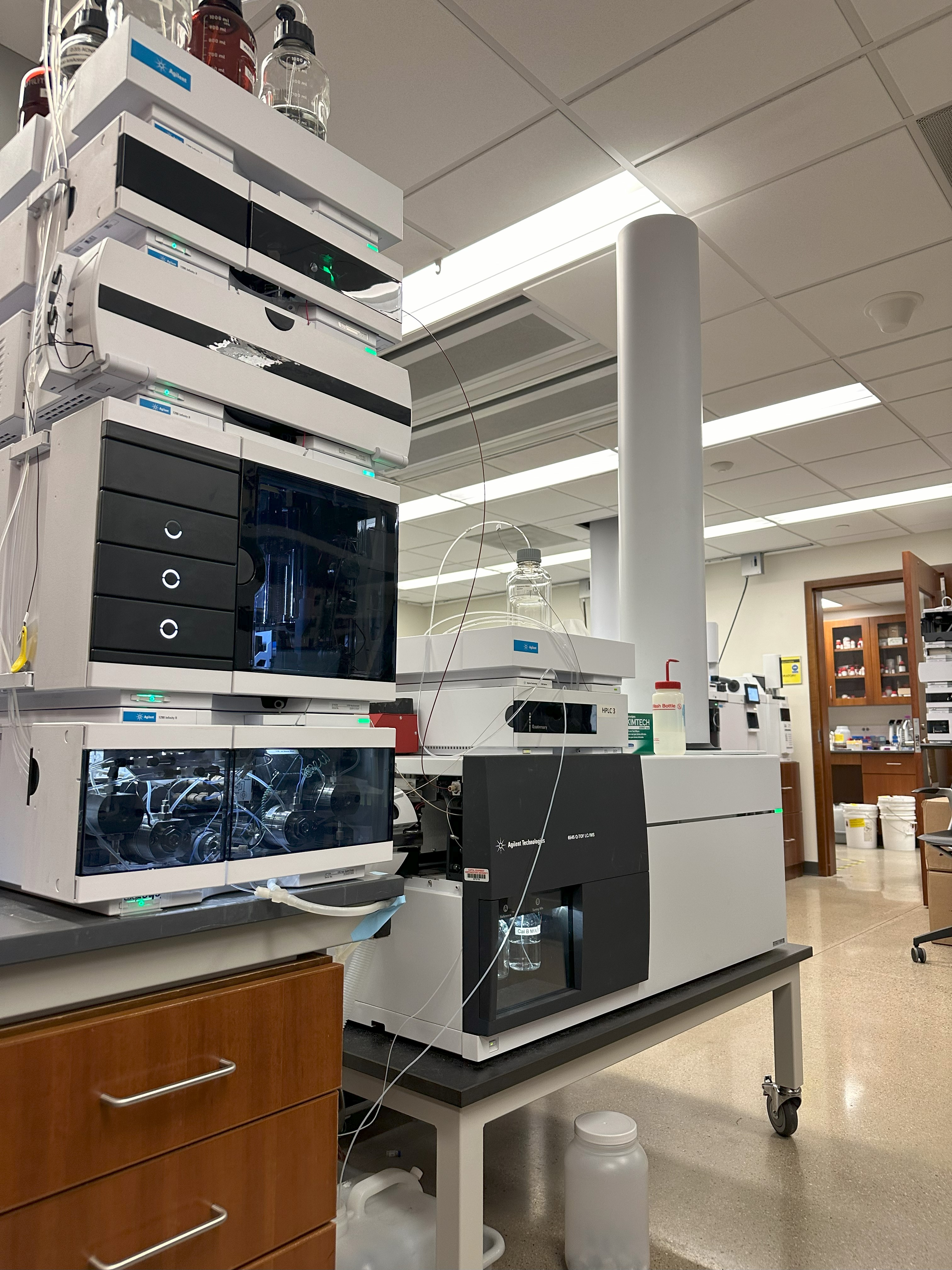
This is a high-resolution accurate mass instrument (quadrupole time-of-flight) coupled to a UHPLC system (Agilent 1290 Infinity II). The UHPLC contains a temperature-controlled multi-column compartment and a binary pump capable of pressure ratings up to 1300 bar. This enables the use of UHPLC-grade columns to provide fast and highly sensitive chromatographic separations when coupled to appropriate mobile phase solvents. Furthermore, this LC-MS is best suited for accurate mass analysis and untargeted/discovery analysis such as lipidomics and metabolomics which requires liquid chromatography and tandem MS using collision-induced dissociation (CID). Tandem MS (MS/MS) can also be accomplished for experiments requiring structural elucidation. The potential use of this instrument is approved after discussing experimental needs, project goals, and sample preparation considerations with IMSERC-MS personnel. Method development might be required for project requests needing specialized chromatography conditions.
Specifications
- 6-Column Compartment for quick method swapping
- Quadrupole with a quad isolation resolution of 1.3 Da
- ESI (Default set up) and APCI-capable
- Data Acquisition modes: MS-Only, Data Dependent Acquisition (Auto MS/MS) and Targeted MS/MS
- Mass Accuracy better than 2 mDa
Bruker rapileX Tissuetyper
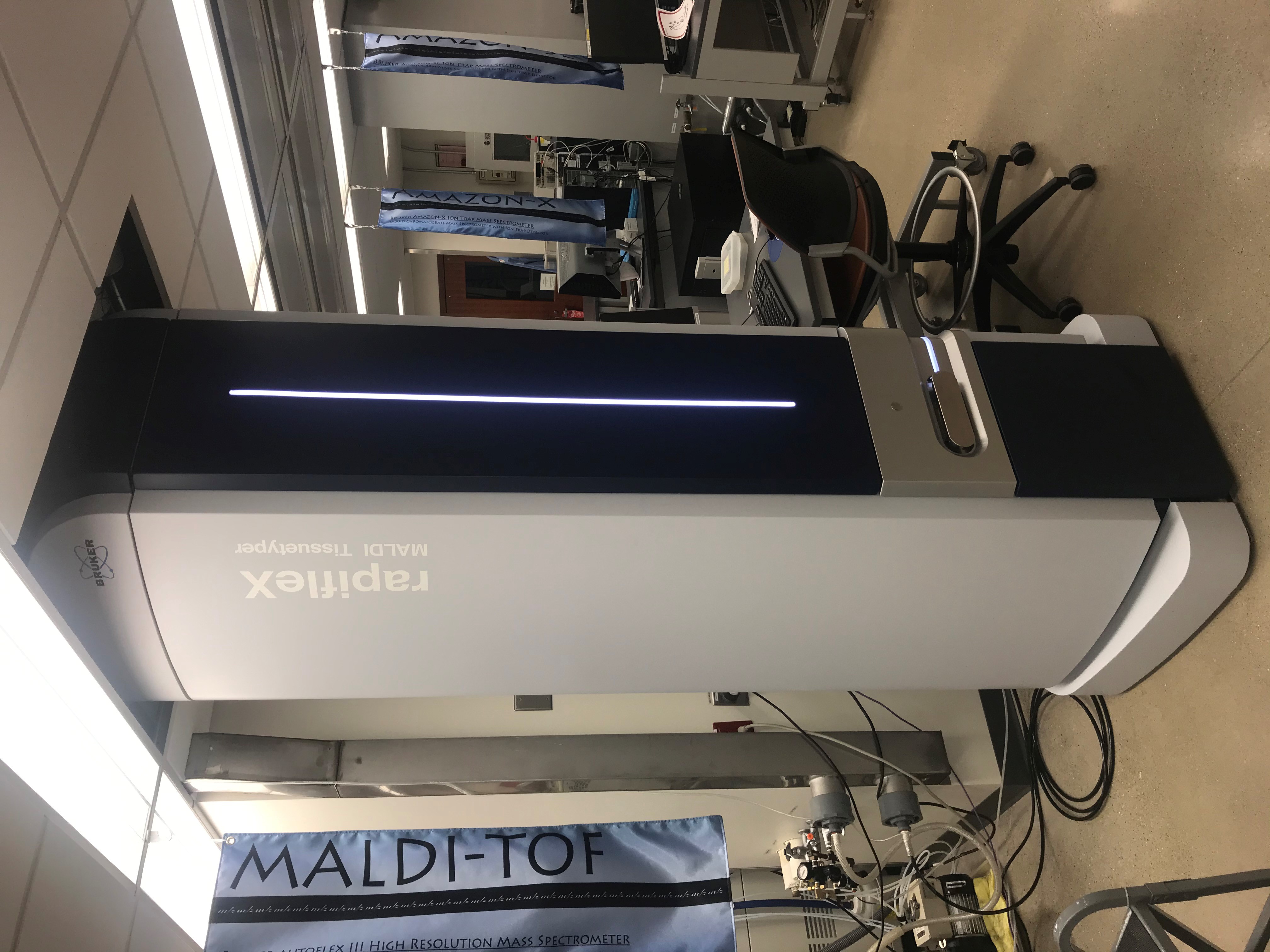
This is our MALDI-ToF instrument (matrix assisted laser desorption ionization – time of flight) for open access use and tissue imaging. The instrument uses fleXImaging software and is ideal for biopolymers (proteins, RNA, DNA, oligosaccharides), organometallic salts, and many synthetic polymers. It works up to 20 times faster than traditional ToF systems yielding higher throughput and data turn around. It offers in-depth characterization and imaging of tissue an cell cultures. SCiLS Software is available for use with data collected at IMSERC upon request.
Specifications
- Smartbeam 3D laser
- Acquisition of 50 true square pixel / second
- Laser repetition rate 10 kHz
- Three-stage reflector for maximum resolution
Agilent 6230 TOF LC/MS

This instrument is dedicated to high-resolution accurate mass measurements by flow injection or liquid chromatography (LC) introduction modes. The mass spectrometer has a resolving power of >22,000 at m/z 1522 independent of acquisition rate and coupled to an HPLC that has a temperature-controlled multi-column compartment, capable of holding multiple columns for method swapping and a quatenary pump capable of pressure ratings up to 800 bar. The mass spectrometer uses electrospray ionization (ESI) source as its default source. Other sources, such as API an APCI are available. Both qualitative and quantitative work flows are available. Typical uses of the system are accurate mass measurement of small molecules, MW identification of biopolymers (protein, peptides, oligos), including mixed mode macromolecules, measurement of mass differences between native and modified macromolecules, targeted metabolite identification, structure elucidation, and relative quantification of molecules. This is the default instrument used to obtain publication-quality, formula verification of compounds via our MS Sample Submission pipeline. The potential use of this instrument is approved after discussing experimental needs, project goals, and sample preparation considerations with IMSERC-MS personnel.
Specifications
- Mass Range 20 - 20,000 m/z
- Mass Acc better than 2 mDa
- Resolving Power >22,000 at m/z 1522
- SmartFormula 3D Capable
Agilent 6475 LC/TQ
This triple quadrupole instrument is dedicated to quantitative LC-MS experiments utilizing multiple reaction monitoring (MRM) or selected ion monitoring (SIM). The mass spectrometer uses electrospray ionization (ESI) via the Agilent Jetstream technology and is coupled to an Agilent Infinity II 1290 UHPLC, which consists of a binary pump with external solvent selection valves, an 8-plate refrigerated Multisampler compartment, and a multicolumn thermostat. The addition of external solvent selection valves and MCT enables a more turnkey start-up for any IMSERC-approved users, as these components reduce physical manipulation of the system before data acquisition. The potential use of this instrument is approved after discussing experimental needs, project goals, and sample preparation considerations with IMSERC-MS personnel and after the method has been created. Approved users are then trained to use the instrument using their own column that matches the method created by IMSERC personnel during the method development process.
Specifications
- Electrospray ionization (ESI)
- MRM Speed: 500 MRM transistion/s
- Minimum MRM Dwell Time: 0.5 ms
- Polarity Switch Speed: <25 ms
- Max Pump Backpressure: 1300 bar
Bruker AmaZon-SL
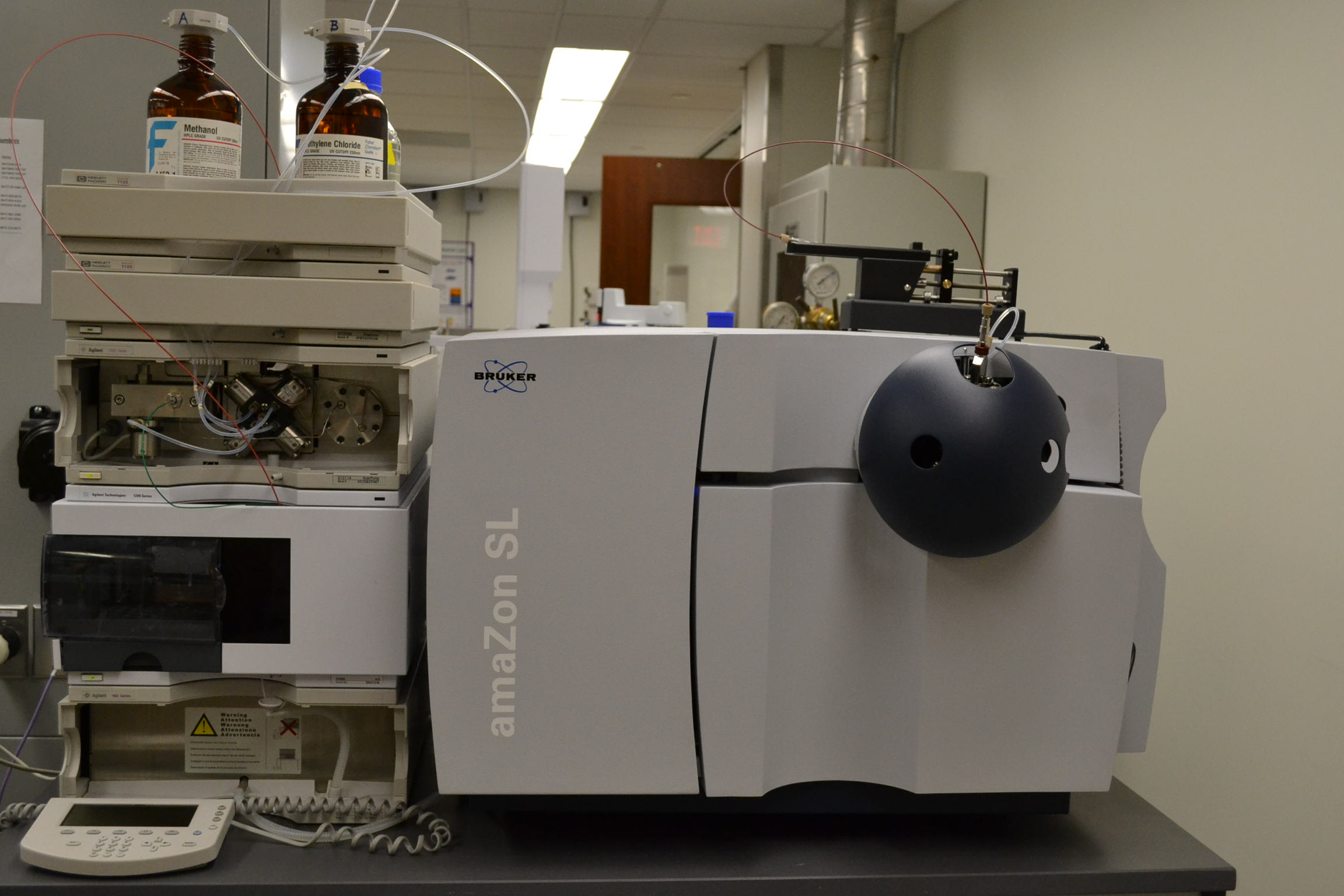
This instrument is nearly identical to AmaZon-X but dedicated to molecular weight and purity analysis by flow injection (no column). The mass spectrometer is configured with an electrospray ionization (ESI) source and can operate in both negative and positive ionization mode. One can analyze compounds that have an improved solubility in less polar solvents (e.g. isopropanol, methylene chloride). MSn is also available for structural elucidation experiments. The solvent delivery is made by an Agilent 1100 quad pump system.
Specifications
- Quadrupole ion trap mass analyzer
- Scan speeds of up to 32,000 u/sec
- Ionization Sources - ESI only
- Mass Range up to 2,200 Da, or 4,000 Da in Extended Mass Range Mode
Agilent 7250 GC/QTOF
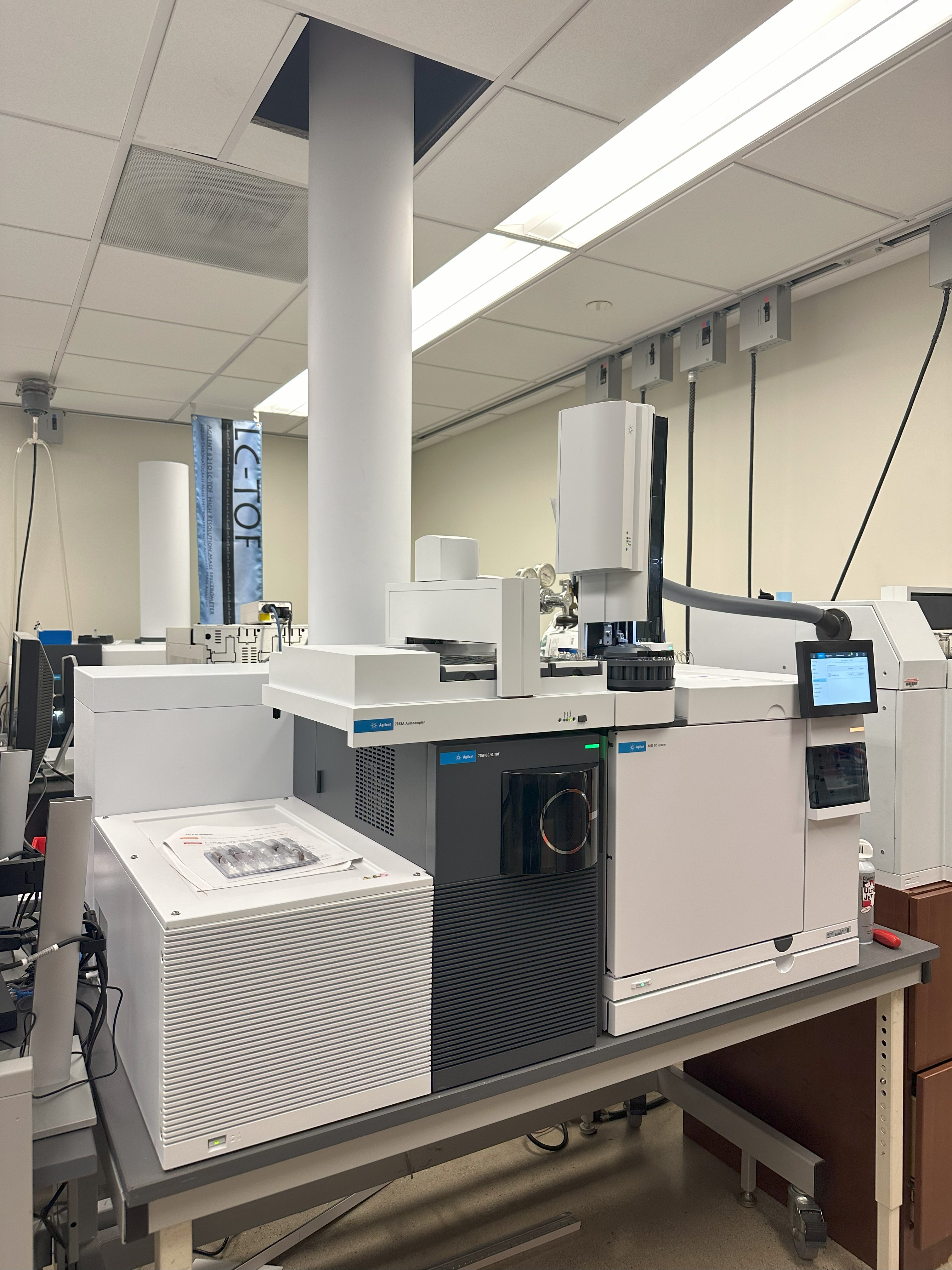
[ COMING SOON ] This is a high-resolution accurate mass spectrometer coupled to a gas chromatograph (GC). Liquid samples and gas samples through a headspace sampler.
Specifications
- Quadrupole time-of-flight Mass Analyzer
- Both solid and liquid samples can be analyzed
- Ionization Sources - Electron Impact
- TOF Mass Range up to 20 - 3000 Da
- Column FFAP for polar molecules; non-polar molecules elute early
GCMSD-DB5
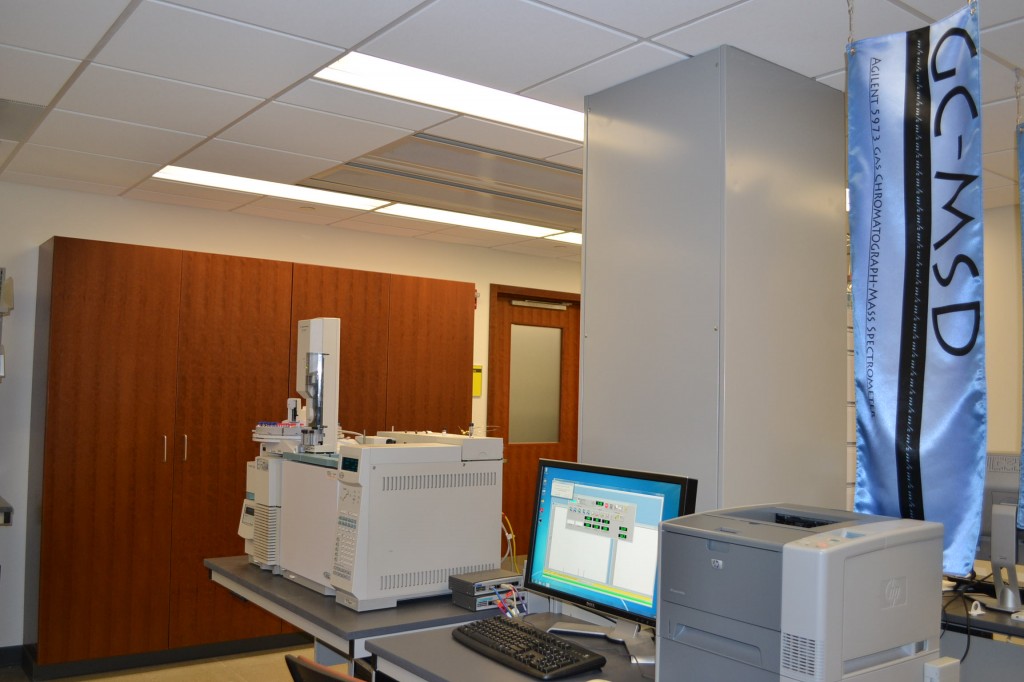
This is a single quadrapole GC mass spectrometer with a DB5 column for non-polar molecules. Unknown compounds in a mixture can be identified using the NIST library of spectra. This instrument is ideal for quantitating known compounds in complex mixtures. The mass range is limited to 800 Daltons.
Specifications
- Quadrupole Mass Analyzer
- Column DB5, maximum temperature 340 oC
- Ionization Sources - EI
- Mass Range up to 800 Da
Aqueous GPC
This instrument is dedicated to Aqueous Gel Permeation Chromatography, also known as Size Exclusion Chromatography (GPC/SEC). GPC/SEC is a type of high performance liquid chromatography (LC) that separates molecules on the basis of their size, hence ‘size exclusion.’ GPC/SEC is used to determine the molecular weight distributions of polymers.
Specifications
- Agilent 1200 HPLC: Uses Phosphate Buffered Saline (PBS) as mobile phase and PSS Suprema column, and Variable Wavelength UV absorbance detector.
- Wyatt DAWN HELEOS II: A multi-angle static light scattering (MALS) detector. The molar mass and root mean square radius of the solute are determined by measuring the intensity of the scattered light provided that the refractive index increment (dn/dc) of the solute/solvent system is known.
- Wyatt Optilab T-rEx: A refractometer for measuring the absolute refractive index and its increment.The system separates particles with MW range from 1k g/mol to 450k g/mol according to size and characterizes individually by static light scattering, refractive index and absorbance.
Organic GPC
This instrument is dedicated to Organic Gel Permeation Chromatography. GPC is a type of high performance liquid chromatography (LC) that separates molecules on the basis of their size, hence ‘size exclusion.’ GPC/SEC is used to determine the molecular weight distributions of polymers.
Specifications
- Agilent 1200 HPLC: Uses Tetrahydrofuran as mobile phase and double GPC column PolyPore from Varian.
- Wyatt DAWN HELEOS II: A multi-angle static light scattering (MALS) detector. The molar mass and root mean square radius of the solute are determined by measuring the intensity of the scattered light - provided that the refractive index increment (dn/dc) of the solute/solvent system is known.
- Wyatt Optilab T-rEx: A refractometer for measuring the absolute refractive index and its increment.The system separates particles with MW range from 1k g/mol to 2000k g/mol according to size and characterizes individually by static light scattering, refractive index and viscosity.